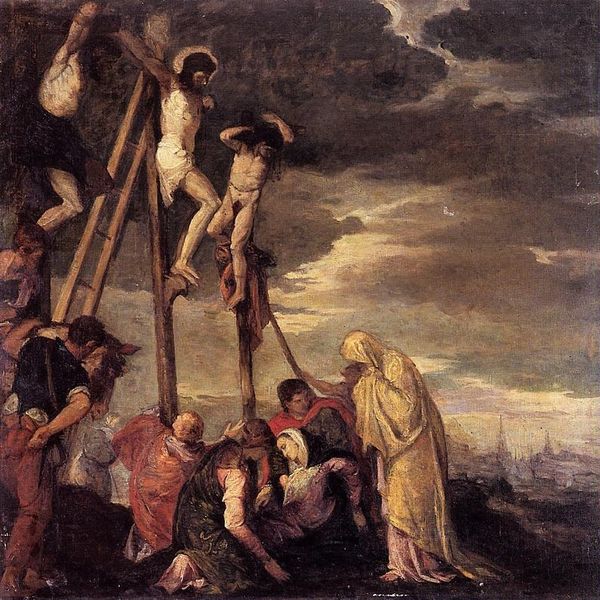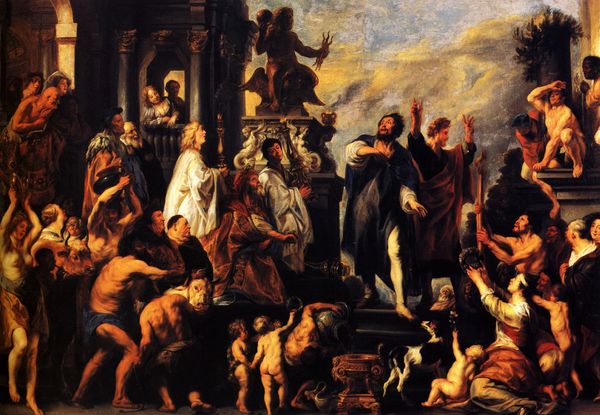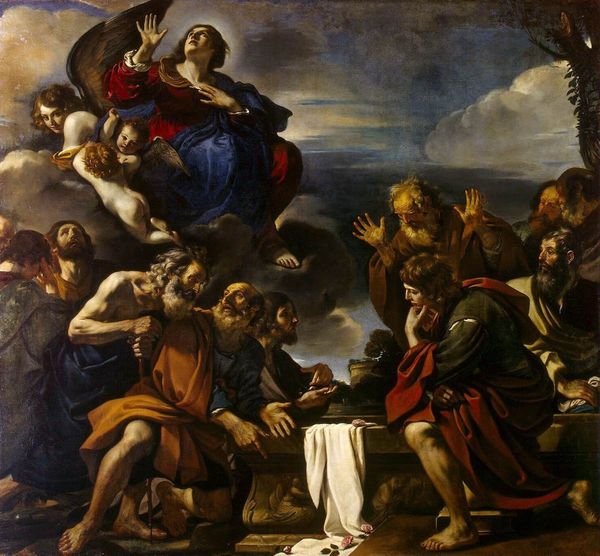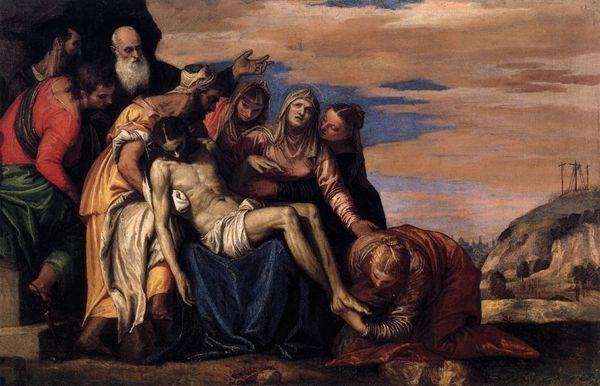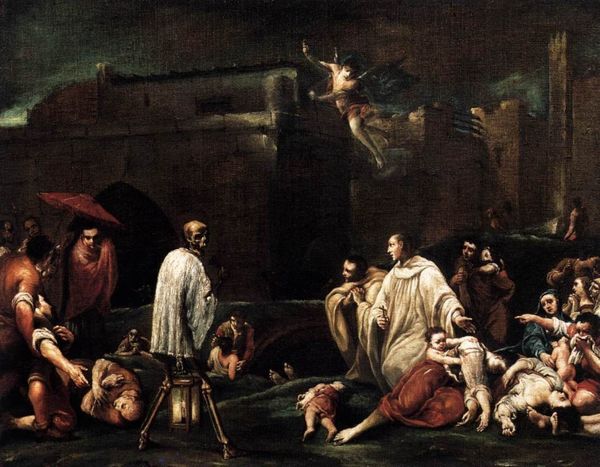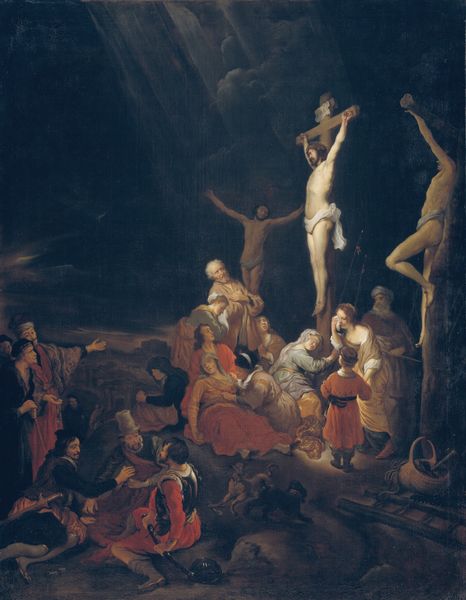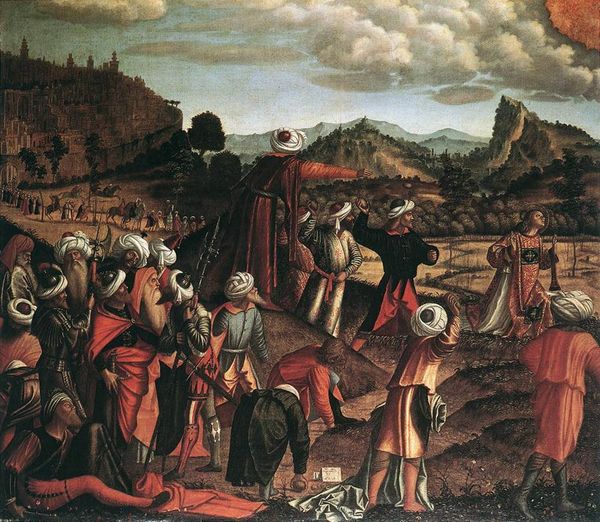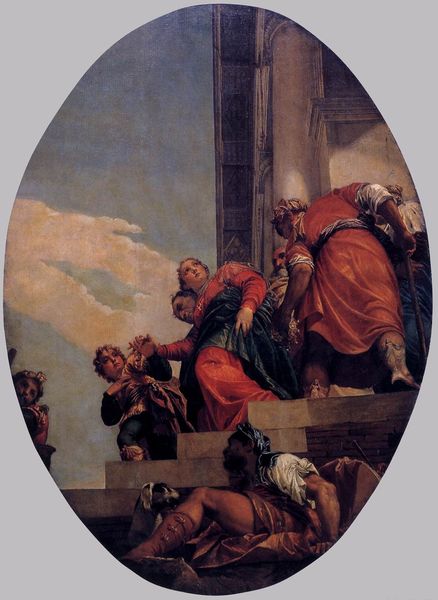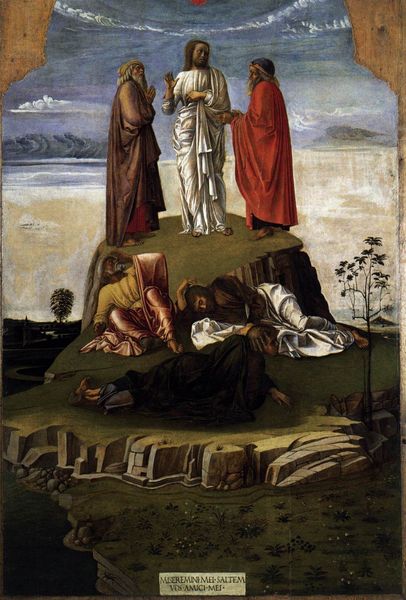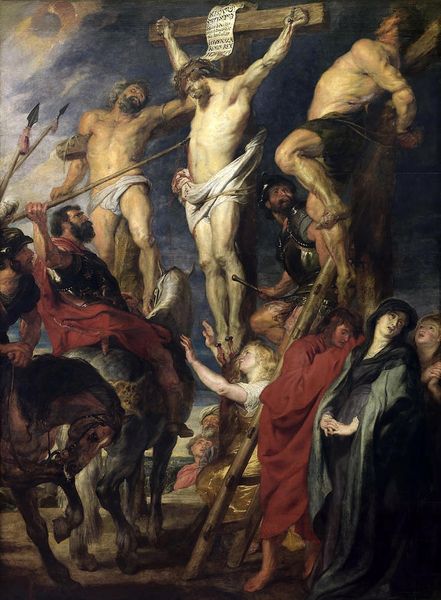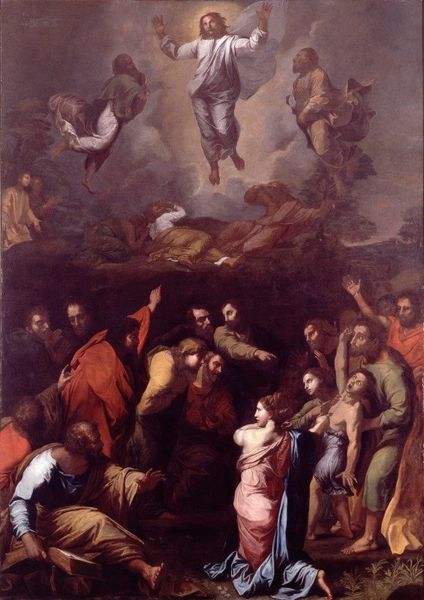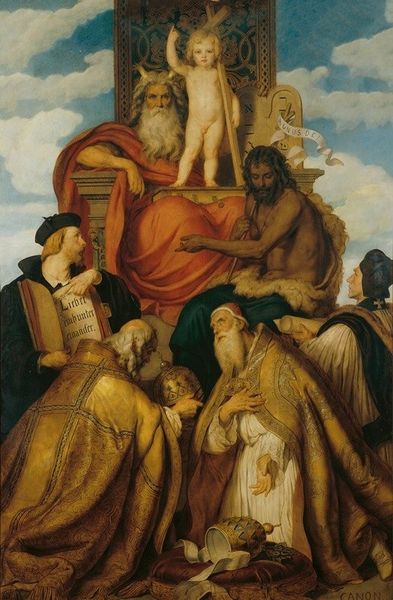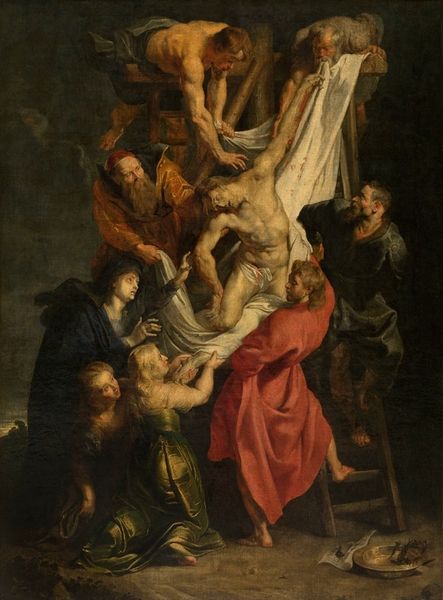
oil-paint
#
venetian-painting
#
oil-paint
#
figuration
#
oil painting
#
jesus-christ
#
underpainting
#
soldier
#
christianity
#
crucifixion
#
history-painting
#
italian-renaissance
#
christ
Dimensions: 102 x 102 cm
Copyright: Public domain
Editor: We’re looking at Paolo Veronese’s “Crucifixion” from 1582, an oil painting here at the Louvre. The darkness and the drama are really striking; it feels almost like a theatrical stage. What symbols or deeper meanings do you see embedded within this work? Curator: The Crucifixion scene, so central to Christian faith, has a deeply embedded symbolic language. But here, Veronese layers additional visual cues. The stormy sky, the figures writhing in grief – they aren't just depictions of a historical event, but visual metaphors. The darkness itself acts as a powerful symbol, reflecting not only the literal darkeness during the event but also the dark weight of sorrow and loss. What else catches your attention in the arrangement of figures? Editor: I noticed the almost chaotic arrangement, it's unsettling... I wonder why? Curator: Indeed. Instead of serene order, there’s purposeful unease. This fracturing speaks to the disruption of faith, perhaps, the rending of the earthly and divine. Notice how some figures look up toward Christ, while others recoil, shrouded in shadow. What might Veronese be telling us through this visual dichotomy? Editor: It’s almost as though he's representing different facets of belief, the wavering and the unwavering in the face of immense suffering. The way he plays with shadow feels very deliberate, enhancing this contrast between those who look towards the light versus those consumed by the immediate darkness of grief. Curator: Precisely. And by depicting it in this way, the symbols reflect psychological and spiritual struggles that echo through generations of viewers, creating a kind of cultural memory we keep reinterpreting. What has stood out for you during our chat? Editor: How potent symbolism can be. It's not just about illustrating a biblical scene, it's about tapping into the collective psyche, creating lasting echoes of emotion. Thank you for sharing your insight!
Comments
No comments
Be the first to comment and join the conversation on the ultimate creative platform.
